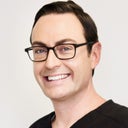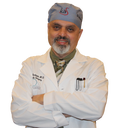Hello. Thank you for your question. Aging of the face is a complex process that involves progressive loss of facial fat and bone volume and progressive laxity of skin and and supporting connective tissue that leads to sagging in the most dependent areas, including the neck, jawline, marionette lines and nasolabial folds. Each individual is unique in the progression of these aging changes with some demonstrating more laxity than volume loss, while vice versa for others. Therefore, management for facial rejuvenation must be individualized for each patient. Depending on the degree of aging changes, this may involve a facelift to address the laxity in the lower face and neck, midface volume restoration using grafted fat, fillers or implants, or a combination of both. I would encourage you to seek a consultation with a board-certified Facial Plastic Surgeon or Plastic Surgeon who has extensive experience and expertise in facial rejuvenation, and allow them to assess your individual anatomy, concerns and goals, in order to determine the best treatment plan for you. I wish you the best in achieving your aesthetic goals.









